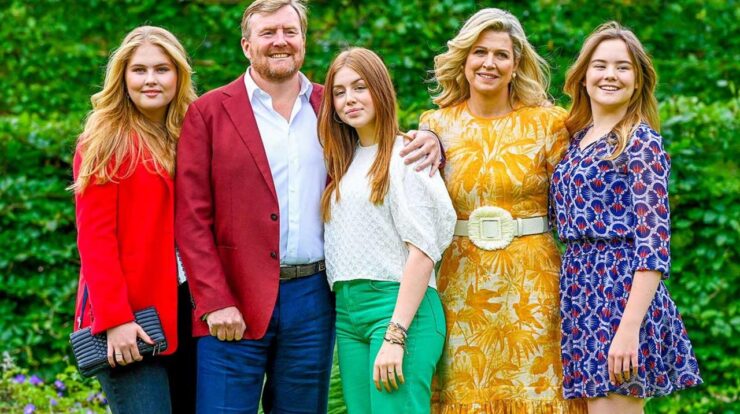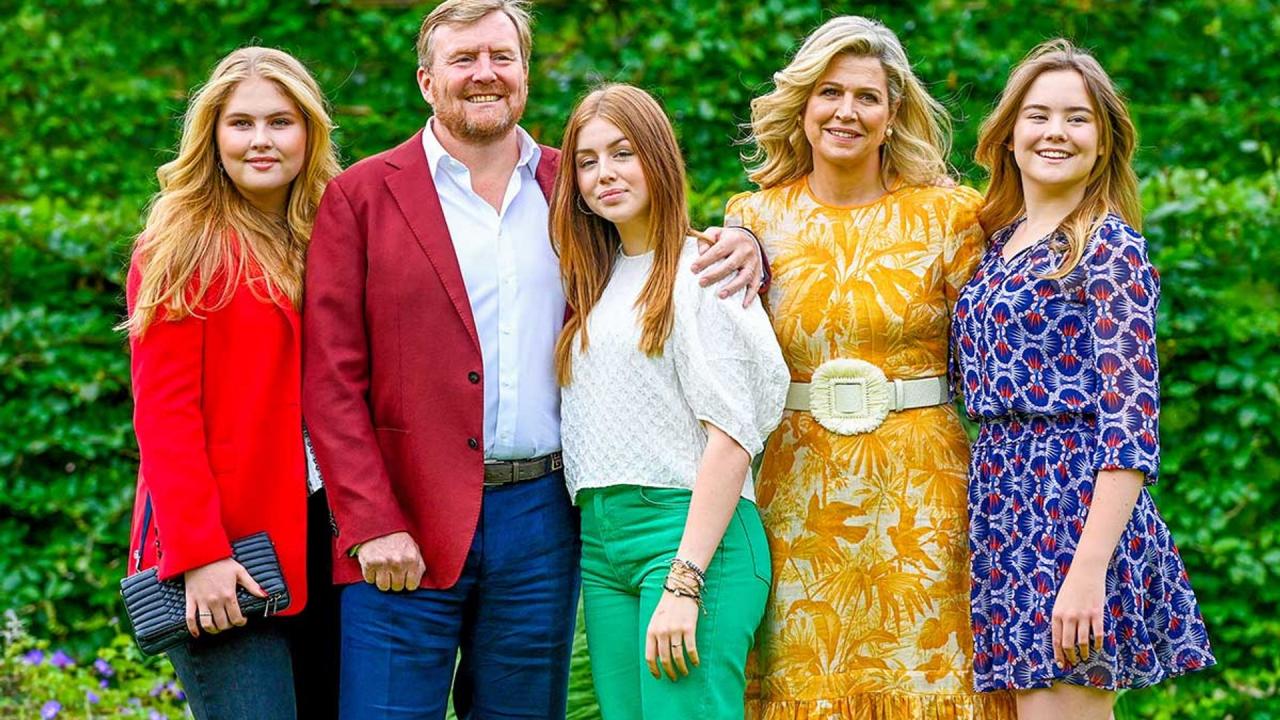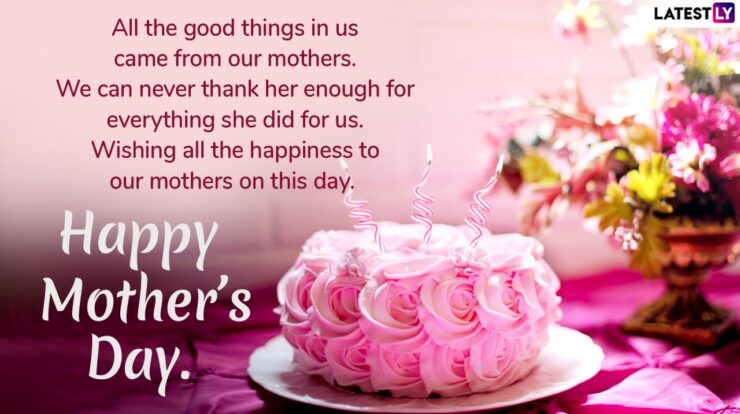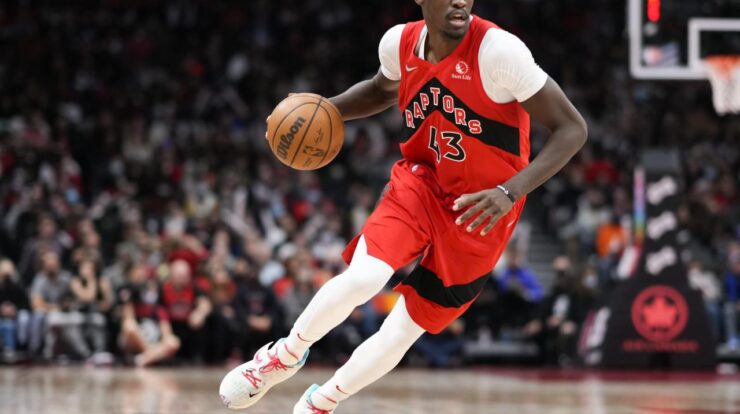
King of netherlands – King Willem-Alexander of the Netherlands embodies the rich history and evolving role of the Dutch monarchy. As the constitutional monarch, he serves as a symbol of national unity while navigating the complexities of modern governance.
From his early life and military service to his official duties and international engagements, Willem-Alexander’s reign has been marked by both tradition and innovation.
Willem-Alexander of the Netherlands
Willem-Alexander Claus George Ferdinand is the reigning King of the Netherlands and Head of the House of Orange-Nassau. He ascended to the throne on 30 April 2013, upon the abdication of his mother, Queen Beatrix.
Early Life and Education
Willem-Alexander was born in Utrecht on 27 April 1967. He is the eldest son of Queen Beatrix and Prince Claus. He studied history at Leiden University and obtained a Master’s degree in 1993.
Military Service, King of netherlands
After completing his studies, Willem-Alexander served in the Royal Netherlands Navy for two years. He qualified as a naval helicopter pilot and served on the frigate HNLMS Van Nes.
Role as Constitutional Monarch
As King of the Netherlands, Willem-Alexander is the constitutional monarch and Head of State. He represents the country at home and abroad and performs official duties such as opening parliament, signing laws, and receiving foreign dignitaries.
Official Duties and Responsibilities
The King’s official duties include:
- Opening the States General (parliament)
- Signing laws and royal decrees
- Receiving foreign dignitaries
li>Appointing government ministers and judges
The King also plays a ceremonial role in the Netherlands’ political system. He attends cabinet meetings and gives the annual Christmas speech to the nation.
Relationship with the Dutch Government
The King’s relationship with the Dutch government is based on the principles of constitutional monarchy. He is not involved in day-to-day governance but plays a symbolic and unifying role for the nation.
History of the Dutch Monarchy
Timeline of the Dutch Monarchy
- 800: Establishment of the County of Holland
- 1579: Union of Utrecht, establishing the Dutch Republic
- 1648: Peace of Westphalia, recognizing the independence of the Dutch Republic
- 1815: Creation of the United Kingdom of the Netherlands
- 1830: Belgian Revolution, leading to the separation of Belgium from the Netherlands
- 1848: Introduction of a constitutional monarchy
- 1948: Abdication of Queen Wilhelmina, accession of Queen Juliana
- 1980: Abdication of Queen Juliana, accession of Queen Beatrix
- 2013: Abdication of Queen Beatrix, accession of King Willem-Alexander
Evolution of the Monarchy’s Role and Powers
The role and powers of the Dutch monarchy have evolved over time. In the early days of the Dutch Republic, the monarchy was primarily a symbolic figurehead. However, with the introduction of a constitutional monarchy in 1848, the King’s powers were reduced, and he became a constitutional monarch.
Notable Dutch Monarchs
- William the Silent (1533-1584): Leader of the Dutch Revolt against Spanish rule
- William III (1650-1702): Stadtholder of the Dutch Republic, known as the “Father of the Nation”
- Queen Wilhelmina (1880-1962): Reigned during two world wars and played a significant role in the Dutch resistance movement
The Dutch Royal Family

Family Tree
- King Willem-Alexander
- Queen Máxima
- Princess Catharina-Amalia
- Princess Alexia
- Princess Ariane
Line of Succession
The line of succession to the Dutch throne is determined by the Act of Succession of 1814. The eldest child of the reigning monarch is the heir apparent. In the absence of a male heir, the throne passes to the eldest daughter.
Official Residences and Palaces
The Dutch royal family has several official residences, including:
- Huis ten Bosch Palace (The Hague)
- Noordeinde Palace (The Hague)
- Paleis Soestdijk (Baarn)
- Drakensteyn Castle (Lage Vuursche)
The King’s Role in Dutch Society

Ceremonial and Symbolic Importance
The King of the Netherlands is a symbol of national unity and identity. He represents the country at home and abroad and performs ceremonial duties such as opening parliament and receiving foreign dignitaries.
Public Appearances and Engagements
The King makes regular public appearances and engages with the Dutch people. He attends national events, visits schools and hospitals, and meets with citizens from all walks of life.
Relationship with the Dutch People
The King is generally well-respected by the Dutch people. He is seen as a symbol of stability and continuity and plays an important role in promoting national unity.
The King’s International Role: King Of Netherlands
Head of State in International Relations
As Head of State, the King represents the Netherlands in international relations. He makes diplomatic visits to foreign countries, meets with foreign leaders, and attends international summits.
Diplomatic Visits and Meetings
The King has made official visits to many countries around the world, including the United States, the United Kingdom, and China. He has also met with numerous foreign leaders, including President Joe Biden and President Xi Jinping.
Involvement in International Organizations
The King is involved in several international organizations, including the United Nations and the World Economic Forum. He is also the patron of several Dutch charities and foundations.
Conclusive Thoughts
The Dutch monarchy, under King Willem-Alexander’s leadership, continues to adapt to the changing times while preserving its deep-rooted traditions. His role as head of state, both domestically and internationally, underscores the enduring relevance of the monarchy in the 21st century.
Quick FAQs
Who is the current King of the Netherlands?
Willem-Alexander
What is the official title of the King of the Netherlands?
King of the Netherlands, Prince of Orange-Nassau
What is the role of the King of the Netherlands?
Constitutional monarch, head of state, symbol of national unity





